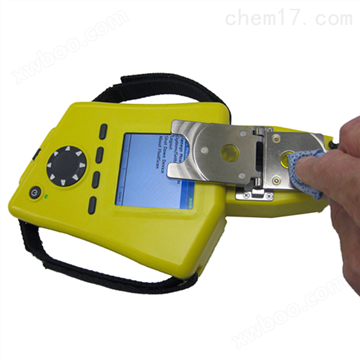Product Introduction
1Portable oil condition analyzerbrief introduction
Portable oil condition analyzerFluidScan1000 is a device that can provide quantitative detection results of physical and chemical indicators of lubricating oil, which can help users extend oil change intervals and optimize maintenance plans.
IIThe difference between FluidScan1000 and FluidScan1100
1. Color
FluidScan1000 is yellow, FluidScan1100 is blue.
2. Default database
FluidScan1000 is a free database (FL364 to FL371) to choose from, while FluidScan1100 is an industrial database.
3. Can it be upgraded to the entire data
Both FluidScan1000 and FluidScan1100 can be upgraded to the entire data.
4. Total water test
Both FluidScan1000 and FluidScan1100 are optional.
5. Routine inspection
FluidScan1000 cannot perform routine inspections, while FluidScan1100 can perform routine inspections.
6. Compatibility with OilView
FluidScan1000 is not compatible with OilView, while FluidScan1100 is compatible with OilView.
7. Industry Applications
FluidScan1000 is mainly used in fleet, navigation, aviation, fuel, etc; FluidScan1100 is mainly used in industrial manufacturing and power plants.
IIIMain features of FluidScan1000
1Quantitative detection algorithm library
(1) Various industrial fluids are classified into different categories based on their physical and chemical properties (composition), and each category contains a quantitative analysis algorithm library for specific grades of fluids.
(2) Calibrate and model each quantitative analysis algorithm using laboratory instruments.
(3) The algorithm library of FluidScan1000 is divided into more than 20 categories, and a quantitative analysis algorithm library has been established for over 700 types of industrial lubricants.
(4) FluidScan1000 has built-in recognition and matching functions, automatically matchingsuitableCalculate the database. For special oils, Speechao Technology provides a free quantitative algorithm library.
2. Automatic background light deduction function
(1) Background light: "natural light" in the light path;
(2) During background light measurement, there should be no oil sample in the sample tank;
(3) When measuring oil, background light is automatically subtracted from the detection results to improve detection accuracy;
(4) The detection result of one background light detection can be applied to multiple detections;
(5) In the following situations, background light detection should be performed first during the detection process:
1) Temperature changes exceeding 2 degrees Celsius;
2) More than 30 minutes have passed since the last background light detection time;
3) Instrument restart.

